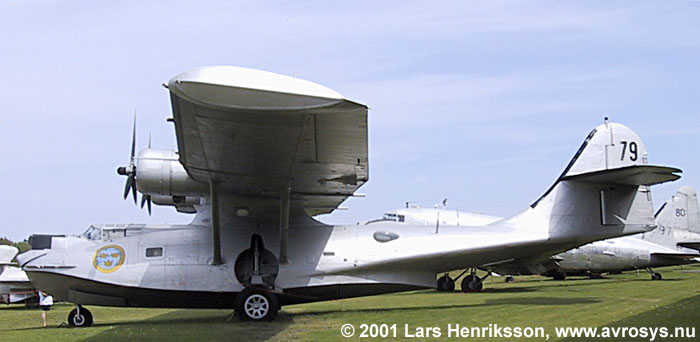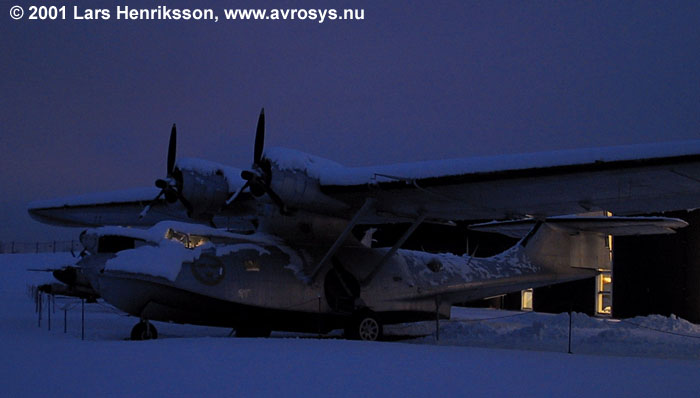|
|
||
| Tp 47 – Consolidated PBY-5A Catalina / Canso (1948-1966) | ||
|
|
Page 1 (3) |
|
|
|
||
 |
||
|
The
flying boat Catalina (so named by the British) flew as a prototype in
1935. It can be characterized as a rather large aircraft of its time
with a wide two-step hull and with a parasol wing, braced by sturdy
struts. The wing was mounted on the top of a pylon, large enough to give
room for a flight engineer. An important feature was the stabilising
floats. These made up an integrated part of the wingtips. In flight the
floats was retracted to reduce drag. 1940, the Catalina appeared in an
amphibious version with a tricycle undercarriage.
The
US Navy acquired about 1.200 examples of the flying boat and nearly
1.000 of the amphibious variant. RAF used their 650 Catalinas mostly for
service with the Coastal Command on the North Atlantic convoy routes.
During WWII, Catalinas also were delivered to Australia, Canada, France
and the Netherlands East Indies. Several hundreds were also manufactured
in the USSR, designated GST. Nearly 3.300 of the Catalina were built in
the USA and in Canada (where it was named ”Canso). After the war,
surplus Catalinas were sold to a lot of countries around the world.
Three
Catalina (Canso) amphibians, built by Canadian-Vickers, were bought by
the Swedish Air Force in 1947. The Swedish designation was
Tp 47. After modifications for their new post-war missions, they
were based at Wing F2 at Hägernäs near Stockholm and were used mainly
for air and sea rescue service. Also reconnaissance missions were flown.
The
Tp 47 was equipped with a radar type PS-19/A.
The aircraft had a crew of five and had also room for six stretchers. It
was powered by two Pratt & Whitney R-1830-92 Twin Wasp
14-cylinder radial engines of 1.200 hp each. The aircraft carried no
armament.
In
June 1952, one Swedish ELINT-equipped Dakota (Tp 79) disappeared over
the Baltic Sea. When searching for the missing aircraft,
Tp 47 # 47002 was shot down by a Soviet MiG-15. The crew of the
Catalina was saved by a German merchant ship.
Number
47001 served in the Air Force for many years. It was written off in 1968
and then flown to Flygvapenmuseum (the Swedish Air Force
Museum), where
it now is displayed. See photos. Length: 19,48 m. Span: 31,72 m. MTOW: 15.450 kg. Max. speed: 265 km/h. |
||
|
For the Model Builder Airfix has produced a plastic model kit of the PBY-5A Catalina in scale 1:72. It is perfect to use for a Swedish Tp 47. Swedish decals are needed, but are easily obtainable on the market. Catalogue number A05007. Click on the thumbnail to get to Amazon's page about this model. |
 |
|
 |
||
| Tp 47 # 47002 in a winter afternoon at the Air Force Museum at Malmen, Linköping | ||
 |
||
|
A Consolidated PBY-5 Catalina depicted on a Vietnamese stamp from 1987. The stamp was issued according to the Hafnia-87 International Stamp Exhibition held in Copenhagen, Denmark. |
||
|
|
||
|
|
||
|
|
||
|
© Lars Henriksson |
|
Updated 2010-02-28 |
|
Custom Search
|
||